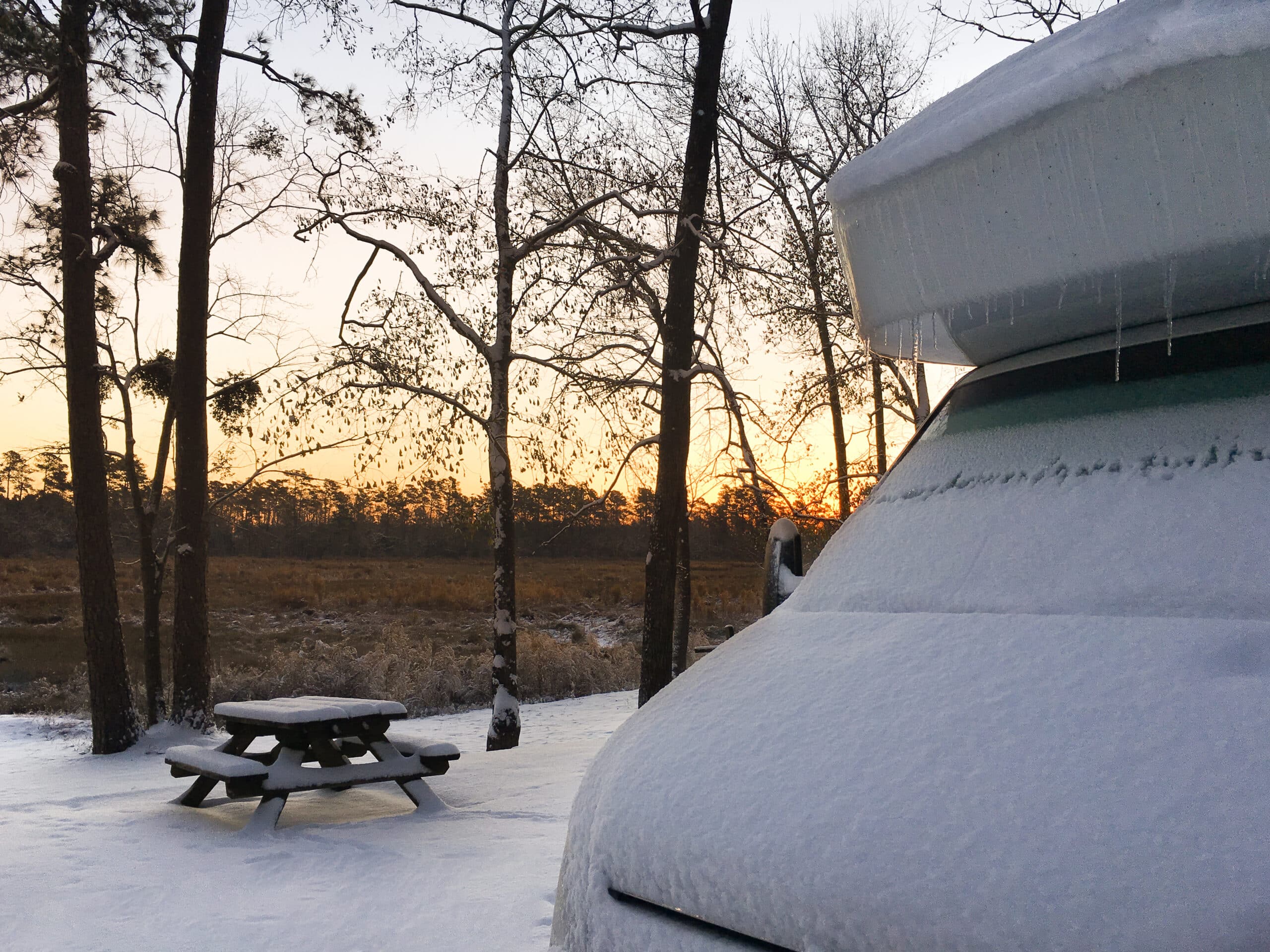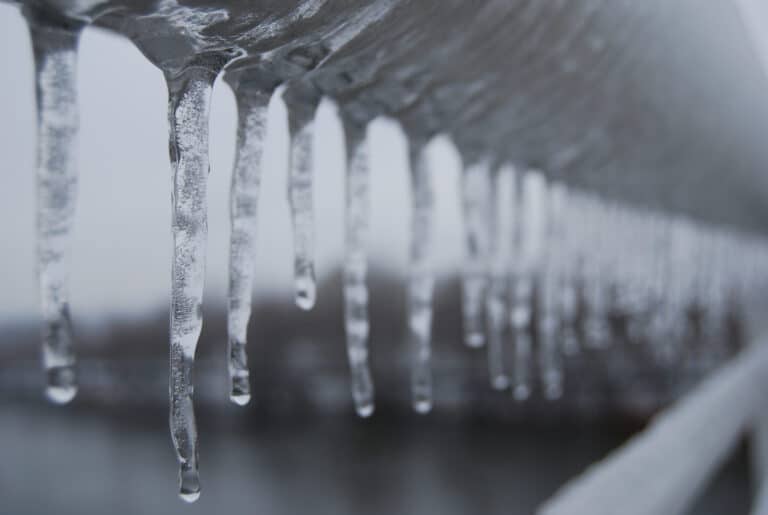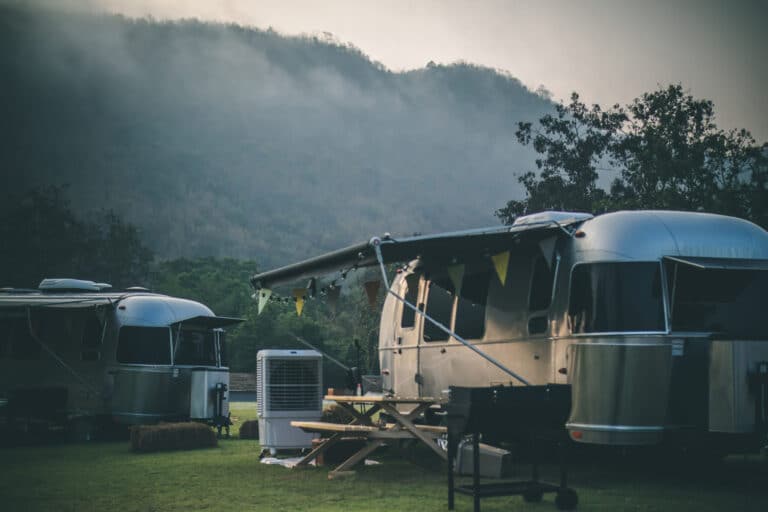RV Inspections After Severe Weather
February 21, 2021
Here at Waggin’ Tail Ranch RV Park, we aim to share tips and advice for full-time RVers and weekend warriors alike. However, today’s contribution reflects a somber reality. After the February 2021 Winter Storm, Texans are rebuilding both their RVs and brick-and-mortar homes.
The word “unprecedented” has been used far too frequently for comfort lately. Many parts of Texas experienced snowfalls and winter conditions this February that hadn’t been recorded in at least 30 years. Millions were without power as grid operators turned off electricity to prevent a full system overload and months-long blackouts. Roadways were impassable, grocery stores were empty, and a state of emergency was declared by both state and federal governments.
As Inigo Montoya from The Princess Bride said when Vizzini kept shouting “inconceivable!”: “I don’t think that means what you think it means.”
But in unprecedented times, you must have unprecedented preparation.
To assist you, here’s a basic guide to surviving severe cold in an RV.
This post will cover:
- What to do for your RV after a winter storm
- What to do to prepare your RV for a winter storm
- What to do to prepare yourself for a winter storm
1. What to Do for Your RV After a Winter Storm
Freezing temperatures can cause water to freeze and swell, leading to cracked pipes and tanks. Even winterizing your RV doesn’t guarantee no damage. Assume there’s damage and inspect your RV when the weather allows.
The following list is courtesy of Mark Polk of RV 101. Mark and his wife Dawn started RV Education 101, a video and RV information company, in 1999.
Things to check:
- RV antifreeze concentration levels
- Batteries: Let the battery completely thaw before use. Inspect for swelling or cracks. If damaged, take it to a professional. Mark Polk’s guide offers a deep dive into this process.
- Automotive antifreeze concentration levels
- RV seams and sealants
- LP gas system
- Electronics
- Snow removal
- RV tires
- RV plumbing system:
- Plumbing lines and fittings
- RV water heater tank
- City water inlet
- Ice maker, washing machine, and dishwasher plumbing
- Holding tanks
- Flush valve in the toilet
- Outside shower
To identify potential leaks in your water system, add a few gallons of potable water to the freshwater holding tank. Close all faucets and activate the water pump to pressurize the system. If the pump keeps running, there’s a leak. Shut it down and start looking for the source.
If you find damage beyond your capabilities, contact a professional RV inspector. A working rig is worth the investment.
2. What to Do to Prepare Your RV for a Winter Storm
Some RVs come with an arctic package, which offers better cold-weather protection. However, even with this feature, extreme cold can still cause damage.
- Heat tape: Use heat tape on your RV’s water hose and sewer pipe. For more information, see our article here.
- Tank heaters: Install a holding tank heater pad to protect your tanks.
- RV skirt: Use an RV skirt to insulate the underside of your RV, protecting batteries and tanks.
- Windows: Windows are the main places where heat escapes, so make sure to reinforce those with foam insulation boards, bubble wrap insulation, solar blankets, thermal curtains or Reflectix.
- Sealant: Check and reseal doors and windows as needed.
- Heated water hose: Use a heated RV water hose to prevent freezing.
- RV antifreeze: Keep RV antifreeze handy for drains and toilets.
- Propane: Ensure you have plenty of propane to last through the cold.
- Space heaters: Use low-wattage space heaters to supplement built-in heaters.
- Humidity control: Finally, make sure you have a plan for minimizing humidity. All that heat inside what is essentially a box is a recipe for humidity, condensation, and eventually mold. Dehumidifying pellets and electric dehumidifiers can help.
DIY RV insulation takes time, so make modifications while the weather is good.
3. What to Do to Prepare Yourself for a Winter Storm
Although much of what we’ve experienced in 2020 and 2021 is unprecedented, now that you know what can happen, don’t let the next big storm catch you unprepared.
- Emergency bag: Pack a go-bag with medications, water, pet food, and important paperwork.
- Know where to go: Identify warm-up centers or shelters in case conditions become too rough.
- Emergency food and water: Replenish supplies and check expiration dates.
- Weather radio: Keep a battery-powered weather radio on hand.
- Phone charger and power bank: You can find solar-powered power banks like this one, or power banks with huge capacity like this one.
- Lighting: Stock up on headlamps, flashlights, and extra batteries.
- First aid kit: Ensure your kit is fully stocked.
- RV park address and site number: Know your location in case you need to call 911.
Make sure your insurance is adequate. This is an excellent tip from Take That Exit. If your RV is your full-time home, make sure your insurance will cover you if this rig doesn’t make it.
In summary, preparation is everything, whether you are preparing for a weekend trip to the seaside or a year-long tour of America. RVing in winter storms is not impossible with the right preparation and supplies. We hope this blog post helps and that it finds you well, safe, and warm.




